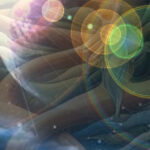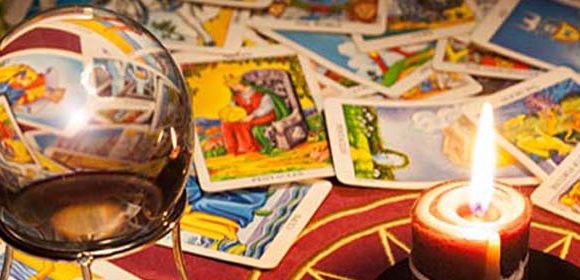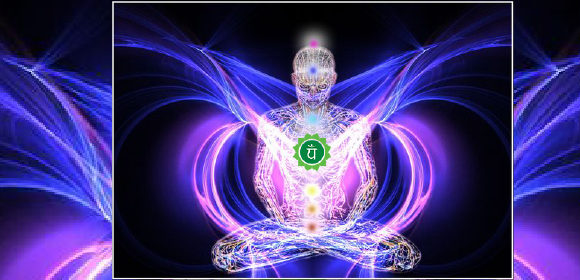In the 20th century, quantum physics reshaped our understanding of reality. It showed us that the universe is not a static, predictable machine, but a dynamic interplay of energy and potential. At the same time, ancient spiritual traditions have long held that consciousness plays a vital role in shaping our experience of the world. Today, the bridge between science and spirituality is being explored more than ever, particularly through the lens of the quantum field and its mysterious relationship with consciousness. Could it be that our thoughts are not passive, but active forces that shape reality itself?
The Quantum Field: A Sea of Possibility
At the heart of quantum physics lies the concept of the quantum field – an invisible, omnipresent sea of energy from which all matter arises. Unlike classical physics, which sees objects as solid and distinct, quantum theory reveals that particles exist in a state of superposition, meaning they can be in multiple states at once until they are observed or measured.
This is most famously demonstrated in the double-slit experiment, where electrons fired through two slits behave like waves, creating an interference pattern. However, when observed, they collapse into particles, eliminating the interference. The implication is profound: the mere act of observation – conscious attention – changes the behaviour of particles. In other words, consciousness affects matter.
The Observer Effect and Ancient Wisdom
This observer effect has baffled scientists and inspired mystics. Eastern spiritual teachings, particularly in Hinduism and Buddhism, have long emphasised the power of the mind and the illusionary nature of the material world (maya). They teach that reality is a projection of consciousness, and that by mastering the mind, one can master the experience of life.
Quantum physics echoes this sentiment. If particles exist in multiple states until observed, and observation is a conscious act, then consciousness is not merely a byproduct of the brain—it may be a fundamental component of reality. This aligns with the spiritual idea that we are co-creators of the world we inhabit.
Thoughts as Creative Forces
From a quantum perspective, reality is not fixed; it is a field of potentialities. Thoughts, then, can be seen as waves of intention that influence the collapse of possibilities into form. This idea is often illustrated in the practice of visualization or intention setting, where focused mental energy is believed to bring about tangible results.
Dr. Joe Dispenza and other proponents of quantum mysticism suggest that when we think intentionally and feel with emotional intensity, we broadcast a signal into the quantum field. This signal can attract circumstances, people, and opportunities that match the frequency of our inner state – an idea resonant with the Law of Attraction.
Critics argue that this interpretation stretches the science, and to some extent, they are right: quantum mechanics is notoriously difficult to apply to macroscopic systems like the brain. However, what is compelling is not the literal application of particle physics to daily life, but the metaphorical bridge it provides between empirical science and inner experience.
Non-Locality and the Unity of Consciousness
Another key principle of quantum physics is non-locality – the idea that particles can be instantaneously connected, regardless of distance. This suggests a deep interconnectedness that transcends space and time. Similarly, mystics have long spoken of the unity of all things, the oneness of being, and the collective consciousness that binds us.
If consciousness is not confined to the brain, as some physicists like David Bohm and Amit Goswami have proposed, then it might exist as a field – similar to the quantum field – interpenetrating all reality. This field of consciousness could be the medium through which our thoughts interact with the material world.
Intention, Awareness, and the Art of Creation
When we consciously direct our thoughts and feelings, we are not just reacting to the world – we are engaging in a creative act. This idea reframes the human experience: we are not victims of circumstance, but participants in a vast, unfolding quantum dance. Our awareness brings order to the chaos of possibility. Our intentions shape the probabilities into actuality.
This doesn’t mean that we can control everything with our minds, but it does suggest that we have more influence than we often realize. By cultivating mindfulness, clarity, and emotional coherence, we may be able to more effectively align with outcomes that support our growth and well-being.
Bridging Science and Spirit
Quantum mysticism remains a controversial field, and rightfully so. The language of physics should not be misused to validate pseudoscientific claims. However, where responsibly interpreted, it offers a powerful metaphor – and potentially more – for how consciousness and the universe are deeply entwined.
The ancient sages and modern scientists are both asking the same question: What is the nature of reality? As we stand at the intersection of these two paradigms, we begin to see that consciousness is not merely a side-effect of the brain, but perhaps the ground from which all else arises.
In this light, our thoughts are not trivial – they are creative. Our awareness is not incidental—it is integral. And the universe is not a fixed object, but a living, responsive field of possibility awaiting the imprint of our attention.







